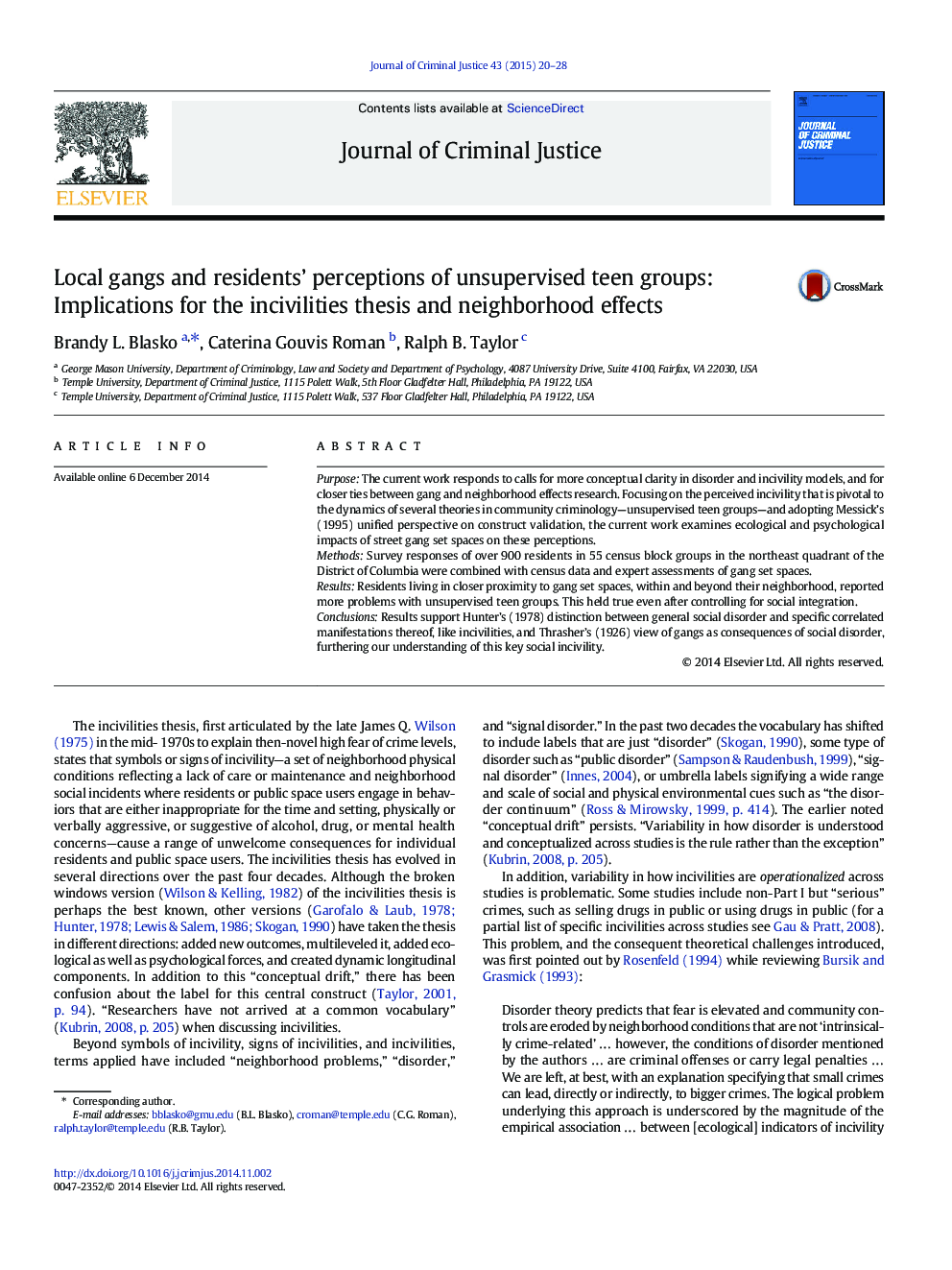| Article ID | Journal | Published Year | Pages | File Type |
|---|---|---|---|---|
| 882692 | Journal of Criminal Justice | 2015 | 9 Pages |
•This work examines the role of gangs with regard to perceptions of incivilities.•Residents in closer proximity to gangs report more problems with rowdy teens.•The number of gangs in a neighborhood is not associated with perceived rowdy teens.•Conceptual clarity regarding a key indicator of the incivilities thesis is provided.
PurposeThe current work responds to calls for more conceptual clarity in disorder and incivility models, and for closer ties between gang and neighborhood effects research. Focusing on the perceived incivility that is pivotal to the dynamics of several theories in community criminology—unsupervised teen groups—and adopting Messick’s (1995) unified perspective on construct validation, the current work examines ecological and psychological impacts of street gang set spaces on these perceptions.MethodsSurvey responses of over 900 residents in 55 census block groups in the northeast quadrant of the District of Columbia were combined with census data and expert assessments of gang set spaces.ResultsResidents living in closer proximity to gang set spaces, within and beyond their neighborhood, reported more problems with unsupervised teen groups. This held true even after controlling for social integration.ConclusionsResults support Hunter’s (1978) distinction between general social disorder and specific correlated manifestations thereof, like incivilities, and Thrasher’s (1926) view of gangs as consequences of social disorder, furthering our understanding of this key social incivility.
